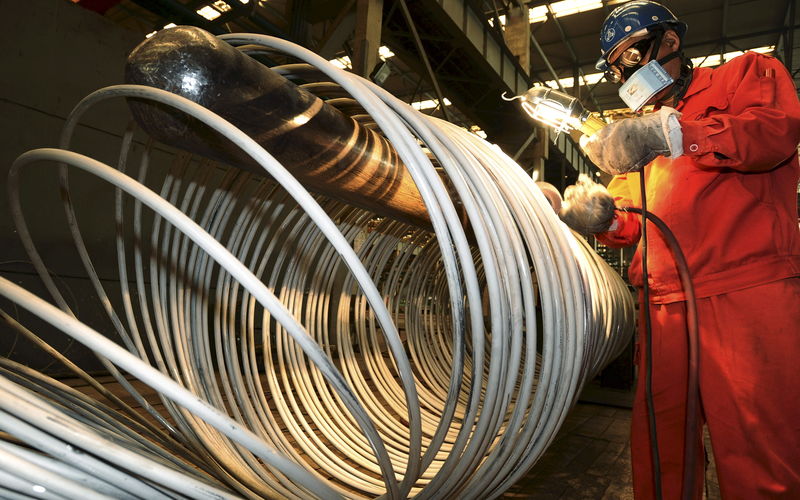(Repeats item issued earlier. The opinions expressed here are those of the author, a columnist for Reuters.)
By Clyde Russell
LAUNCESTON, Australia, Dec 8 (Reuters) - China has thrown the world's commodity producers and traders a massive party in the last few months, as evidenced by robust figures for November's imports of crude oil, iron ore and coal among others.
But as all partygoers know, sooner or later the festivities come to an end, and the longer the party continues the more severe the hangover tends to be.
China imports of iron ore jumped to the third highest on record, with November's 91.98 million tonnes up 13.8 percent from the previous month, taking the year-to-date gain to 9.2 percent compared with the same period in 2015. imports of 26.97 million tonnes were the most in 18 months, and were more than double the imports recorded in November last year, according to preliminary Chinese customs data. Coal imports have risen 22.7 percent in the first 11 months of 2016.
Imports of crude oil recovered strongly in November to 32.35 million tonnes, equivalent to about 7.87 million barrels per day (bpd), which is above the year-to-date average of 7.53 million bpd.
Crude oil imports are about 14 percent higher so far this year, which represents an increase of around 925,000 bpd, an amount roughly equivalent to what the Netherlands consumes.
Imports of copper also surged, rising 31 percent to 380,000 tonnes in November from the previous month, the highest since June and a recovery from October's near two-year low.
There is little doubt that these are robust numbers for imports of major commodities and would certainly help justify some of the strong gains in prices seen in recent weeks for many commodities.
But, like most economic data, trade numbers are a look in the rearview mirror and tell little about the likely future path of demand.
Looking at coal it becomes clear that the balance of risks is now tilted toward the downside for prices, as can be seen by the recent retreat of benchmark Australian thermal coal at Newcastle port.
Newcastle coal for January GCLNWCPFBMc3 slipped to $78.15 a tonne on Wednesday, down almost 30 percent from its peak this year in early November.
While Newcastle coal is still comfortably above the levels that prevailed at the start of the year, it's clear the froth is starting to come out of the market, a trend that may accelerate in the first half of 2017.
Coal was pulled higher by rising Chinese imports, but this was created by a political decision in Beijing to cut domestic output rather than any underlying increase in demand.
The Chinese authorities have now reversed much of the cuts to coal mining capacity and strong-armed miners to agree lower prices with utilities for 2017.
While coal import volumes may well continue to be robust, the price may have to decline in order for imports to remain competitive.
Certainly, shipping and port data compiled by Thomson Reuters Supply Chain and Commodity Forecasts suggests December will be another strong month for coal imports.
More than 15 million tonnes of coal has already arrived in China in December or is on its way, a figure certain to rise as more cargoes depart from ports in major suppliers Indonesia and Australia in coming weeks.
PRICE RALLY LOSING STEAM
It's much the same story for iron ore, which has gained strongly since the middle of the year, with spot cargoes for China delivery MYSTL-RIIOI-IMP trading around $72.20 a tonne, up about 60 percent since the recent low in mid-June.
Stronger Chinese steel output coupled with lower domestic iron ore output and an emerging supply discipline from top exporter Australia have combined to boost the price of the steel-making ingredient.
But for iron ore to continue to rally, Chinese steel output has to continue to surprise to the upside and supply must remain disciplined.
While a more healthy outlook for infrastructure spending, construction and manufacturing point to Chinese steel output at least holding around current levels, there is more iron ore supply coming to market from a major new mine in Brazil.
Higher prices will also tempt exporters that had been forced from the market, such as Iran, to see if they can grab a slice of the China import pie.
For crude oil, there are two main factors at play in the outlook for China, namely how much will be added to strategic storages and how much more will merely be re-exported as refined products.
Global benchmark Brent crude LCOc1 is up around 20 percent since mid-November as the market first anticipated an OPEC-led cut to output, and then reacted when such a reduction was delivered at a meeting on Nov. 30.
Higher prices may curb Chinese buying for storage, especially if they believe the market will fall again.
It's also worth noting that fuel exports hit a record high of 4.85 million tonnes in November, up 18.3 percent on year.
This is partially because domestic demand growth has been soft, but also because China's refiners have significant excess capacity and Asian refining margins have made it profitable to export.
Overall, there are good reasons to believe that the Chinese commodity party may be winding down, at least insofar as it has contributed to rising prices.
Import volumes may well remain robust, but there is now a question mark as to whether there will be enough demand growth next year to provide momentum for an ongoing price rally. (Editing by Richard Pullin)
